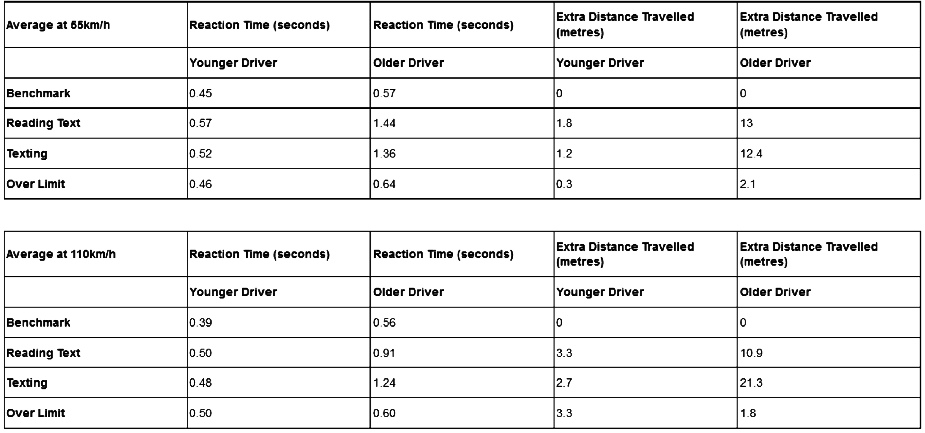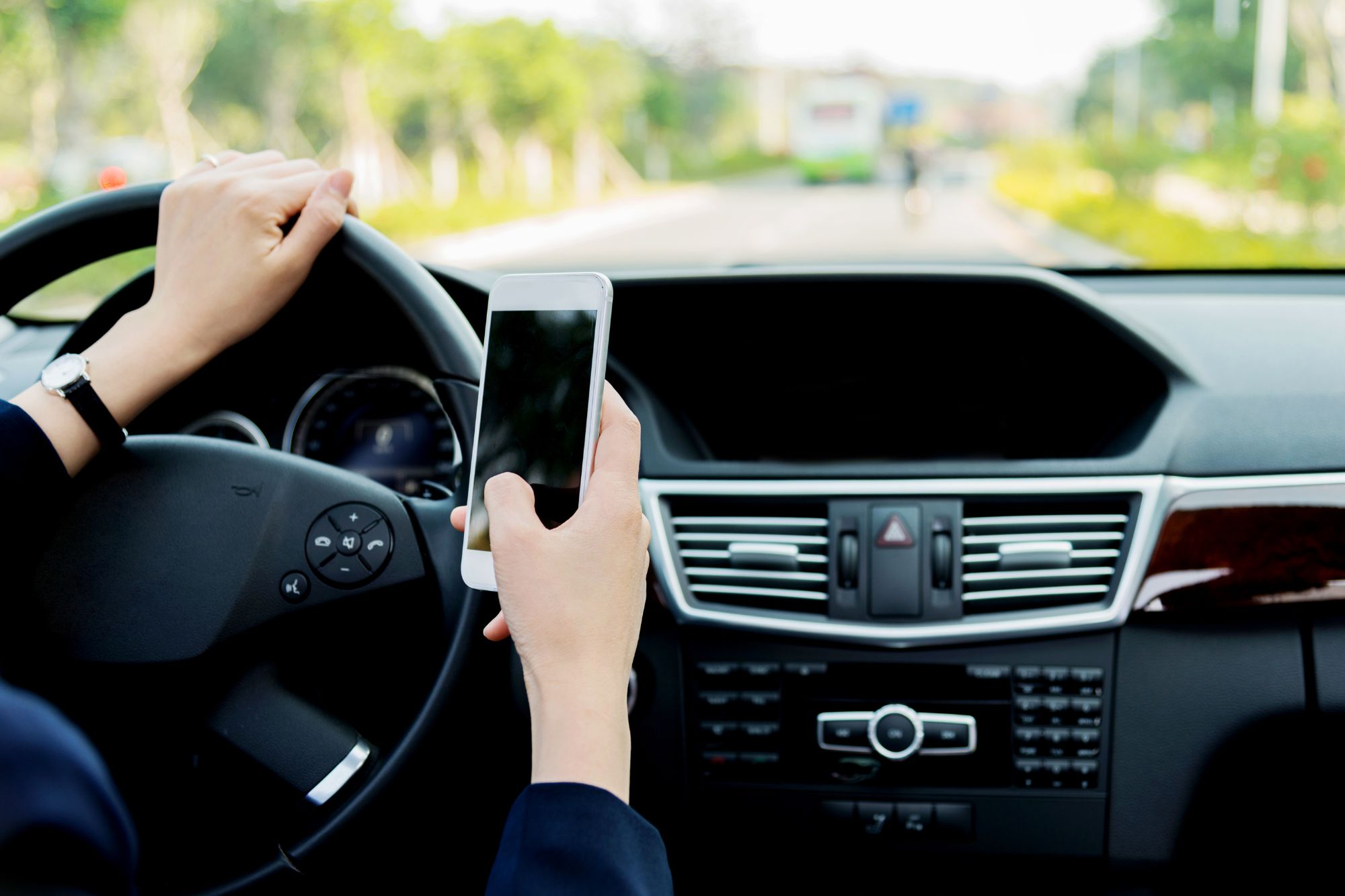Let’s talk reaction time. The single most important defence mechanism we have when driving is possibly our reaction to a potential hazard.
A recent study conducted by motor journalists saw some very interesting and eye opening results.
The journalists, armed with a dashboard light to serve as a visual simulator of brake lights chose 2 individuals of varying ages as case studies.
The first, a 22 year old man to represent a younger age group and a 37 year old man to represent an older group.
The subjects were both given “smart phones” to test their reactions when texting and driving.
All safely done on an airport runway, the drivers would later be given a few drinks to test their drunk driving ability against their text driving ability.
And off the drivers went, the task was simple, drive in a straight line at a certain speed and when the red light on the dash lit up, they were to hit the brakes.
The journalists would sit alongside the driver triggering the switch and monitoring the results, which were recorded using a Racelogic data logger to ensure the most accurate results as possible.
Both drivers’ normal braking reactions were tested first in order to have something to benchmark them against.
Thereafter the 2 drivers were required to read a text message aloud while driving and their braking reactions were once again tested. Both participants had reactions tested at 55km/h and then 110km/h to indicate various distances required to brake at different speeds.
A more difficult test was introduced here after, whereby the 2 drivers had to type out the text they had just read aloud in a way that felt most comfortable to them.
After this test began a fury of intoxication that saw both drivers reach the limit of 0.08 blood-alcohol content.
The drivers were then made to do the brake-reaction test again.
The tests yielded the following results:

These results indicate the shocking lapse in concentration that results from texting and driving, reading text and driving and of course drunk driving.
Both drivers traveled astoundingly further before hitting the brakes while on the phone, an indication of how dangerous texting can be. However, don’t let the drinking and driving results fool you, they are just as bad – the texting results are just so horrendous they somewhat overshadow the drunk driving results. What the results also don’t reveal are that the younger driver had to be told which lane to drive in at what stage – in real life this could have led to a head on collision.
However, as with any simulations, you need to consider the limitations. This test was done on an empty airfield runway, driving was done in a straight line and there was no traffic, no road signals and no pedestrians. The test was done solely on braking reaction and does not test motor skills or take into account situations where one would have to swerve or commit to a serious vehicle manoeuvre.
So while drunk driving is seen as illegal and socially unacceptable, texting behind the wheel is almost more dangerous than driving intoxicated. While we by no means condone drinking and driving whatsoever, we are trying to indicate just how dangerous texting and driving can be.
Stay safe on the road. Don’t text. Don’t tweet. If you have to, pull over somewhere safe and out the way. If everyone made a move to being 100 percent focused when behind the wheel the roads would be a much safer place.
Don’t text and drive!

